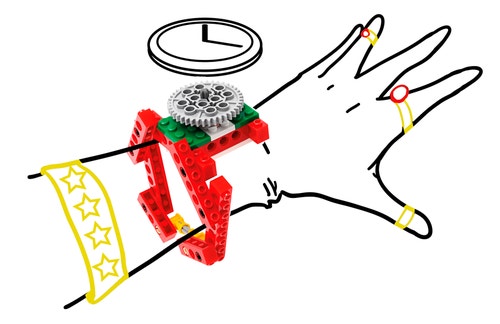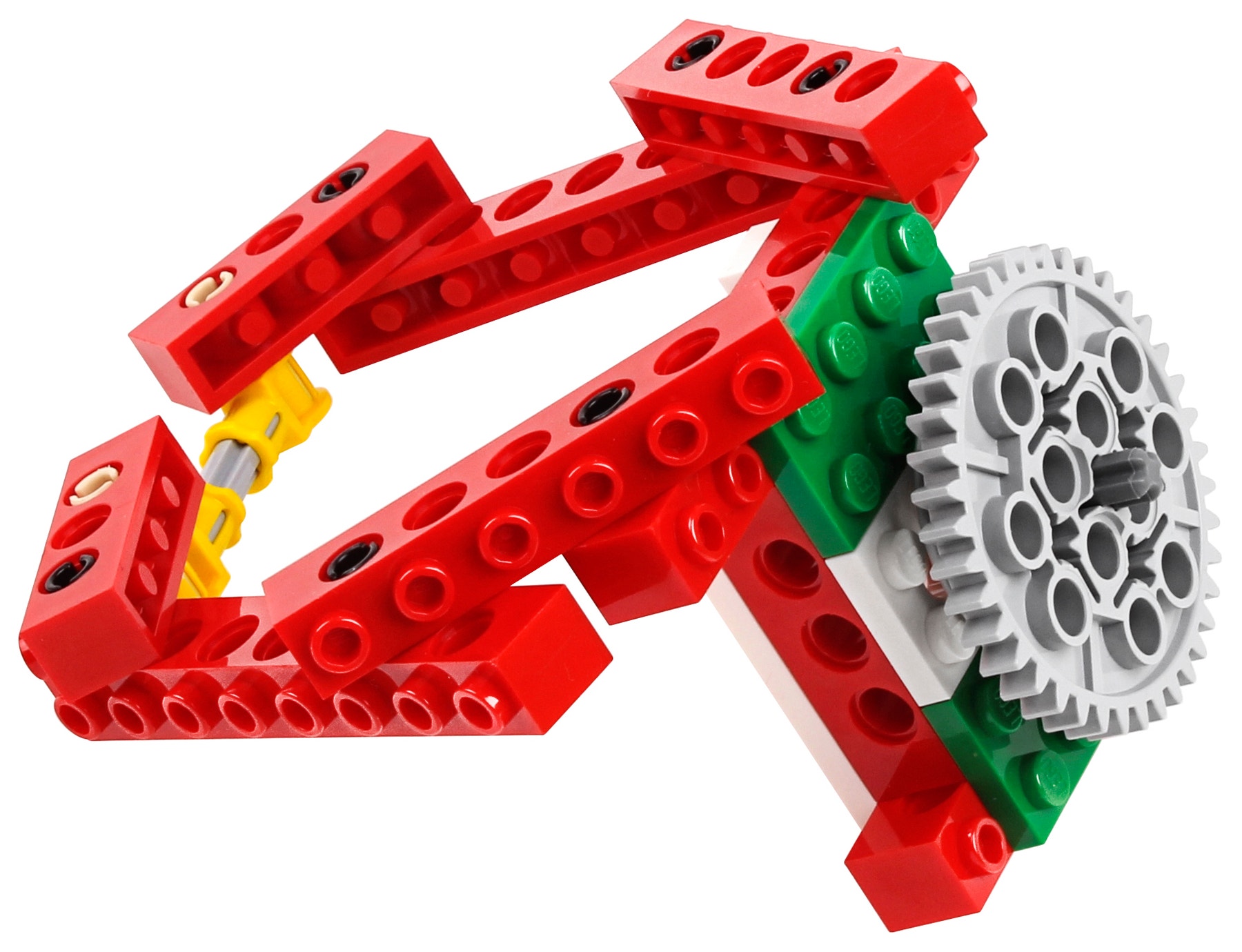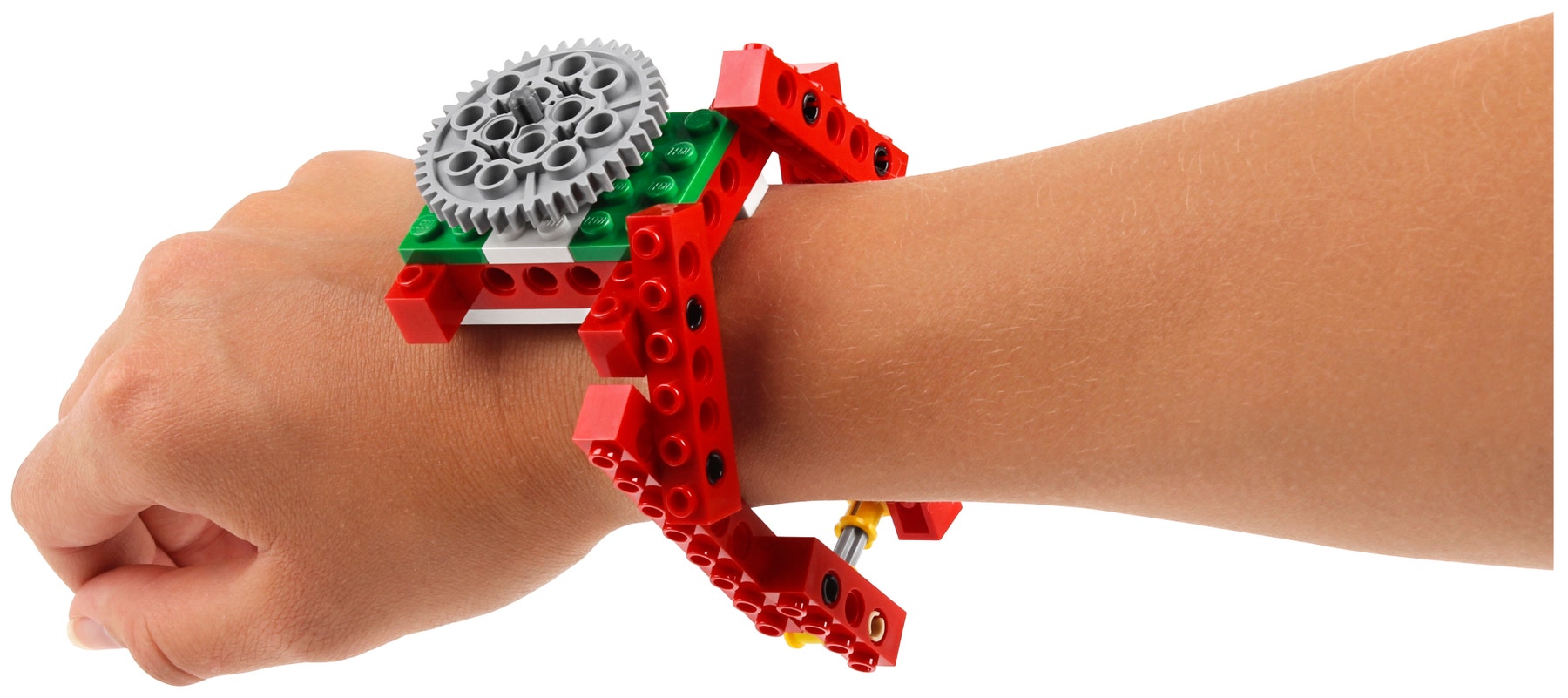Wearables
Explore challenges in your life and make a wearable that solves your problem.

1. Introduction/Discussion
Hand out the worksheets and allow the students to interpret the activity for themselves, or read the MAKER connect text aloud to set the scene.
2. Defining the Problem
As students look at the connect images and questions, facilitate if necessary a discussion to steer them toward a problem. Once they have decided upon a problem to solve, ensure that they record it on their worksheet.
3. Brainstorm
Students should initially work independently, spending three minutes to generate as many ideas as they can to solve the problem they have singled out. They can use the bricks from the set during the brainstorming process, or sketch out their ideas in the space provided on the worksheet.
Students can now take turns sharing their ideas within their groups. Once all of the ideas have been shared, each group should select the best idea(s) to make. Be prepared to help facilitate this process to ensure that the students choose something that is possible to make.
Encourage diversity, not all student groups have to make the same thing.
Possible Wearable Technology Solution, for Inspiration
Note: You are advised not to share these images with students.


4. Define the Design Criteria
Students must record up to three design criteria on their worksheet so that they can refer to it when they review and revise their solution.
5. Go MAKE
Students make one of the ideas using the LEGO® Simple and Powered Machines set and other materials as needed.
Reinforce that students do not have to come up with the whole solution from the start. For example, if they are making some eyewear/glasses, they could explore the shape and fit on the face before looking at the temples (ear supports).
During the making process, remind students to test and analyse their idea as they go, making improvements where necessary. If you want students to submit their documentation at the end of the lesson, ensure that they record their design journey during the making stage using sketches and photos of their models.
6. Review and Revise Your Solution
Students test and evaluate their designs against the design criteria they recorded before they started making their solution. They can record notes on their student worksheet.
7. Communicate Your Solution
Allow time for each student or student group to present what they have made to the class. A good way to do this is to set out a table large enough to display all of the models. If time is short, two groups can present to each other.
8. Assessment
Students use the student worksheet assessment rubric to evaluate their design work according to the learning goals. Each rubric includes four levels: Bronze, Silver, Gold, and Platinum. The intention of the rubric is to help students reflect on what they have done well in relation to the learning goals and what they could have done better. Each rubric can be linked to engineering-related learning goals.
9. Tidy Up
Ensure that you leave enough time at the end of the lesson to break the models down and sort them back into the LEGO boxes. You will need approximately 10 minutes to do this.
Teacher Support
After completing this lesson, students will have:
- Defined a clear design need
- Developed their ability to iterate and improve design solutions
- Developed their problem-solving and communication skills
Optional
Card stock
Thin plastic sheet
Neoprene rubber sheet
Standard alignment to the 21st Century Skills Early Learning Framework:
- Creativity and Innovation
- Critical Thinking and Problem Solving
- Communication
- Collaboration
- Flexibility and Adaptability
- Initiative and Self-Direction
- Social and Cross-Cultural Skills
- Productivity and Accountability
- Leadership and Responsibility
- Information Literacy
Pupil Material
Share with:
 Google Classroom
Google Classroom



